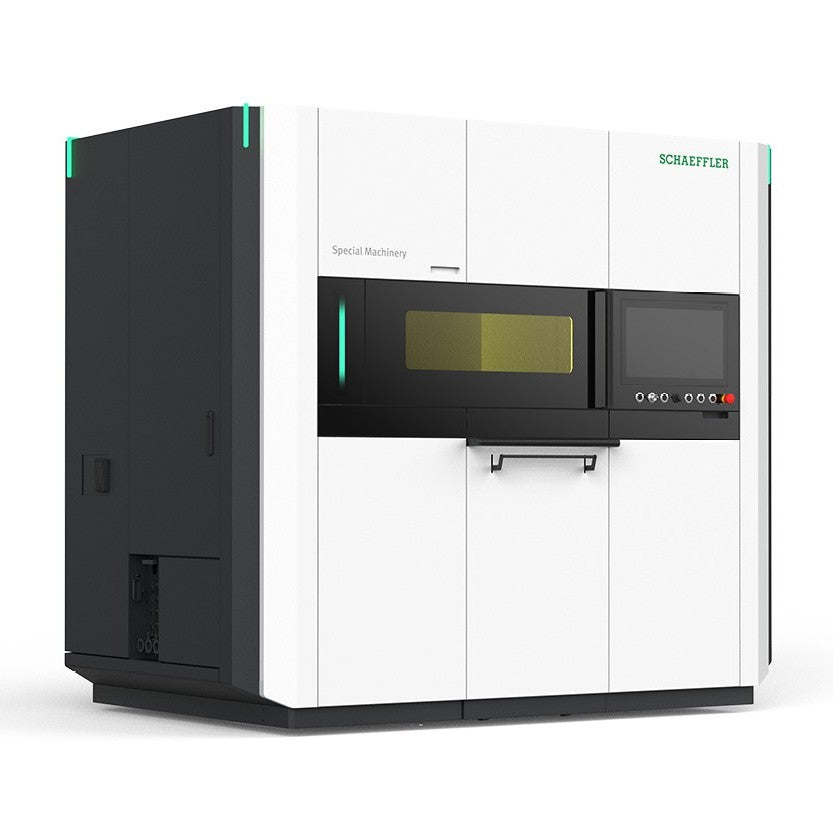Product Features
Additive manufacturing | Multi-material 3D printing with OmniFusion 3D
- Unparalleled design freedom
- Unique material combinations (can produce 3D printed parts using a combination of metals and technical ceramics)
- Integration of several material properties in a single component
- Individualization and needs-based production
With Schaeffler's patented technology, individual layers of the component geometry are applied to the print bed with pixel precision and fused layer by layer to form the finished part. Materials are fed to the Recoater from integrated powder reservoirs or an external powder supply, and the various powders are arranged as needed on the build platform and deposited. During the scanning process, the components are built up layer by layer using a laser. Up to 4 laser beam sources can be used to efficiently process a variety of metals or technical ceramics. The printing process itself takes place in a closed process chamber that is flooded with argon shielding gas. This innovative technology enables the use of up to three different materials.
Specifications
| Dimension | 2525 x 1696 x 2271 mm |
| Component Size | Approx. 250 x 250 x 250 mm |
| Pixel size | 300 µm |
| Layer thickness | 40-200 µm |
| Density | Up to 99.8 % for various materials |
| Print speed | 10 - 100 cm³ / hour |
| Spot size | 50-300 µm |
Benefits of Additive Manufacturing - Multi Material
Additive manufacturing has long since established itself in many areas as an alternative and supplement to the conventional production of workpieces, after centuries of sawing, grinding, milling or ablation. Multi-material 3D printing opens up completely new possibilities here.
Advantages of multi-material production
Extended design freedom and functional integration:
Additive manufacturing in general enables product designers to realize free geometries that are not possible with traditional manufacturing methods. Additive manufacturing in combination with different materials offers additional flexibility to meet individual performance requirements through specific material properties. By combining different material characteristics (e.g. hardness, electrical conductivity, strength, thermal conductivity, corrosion resistance) in one component, products with integrated multifunctionality are created that were previously only technically feasible through complex joining processes or not at all.
Optimized use of materials:
By using different materials exactly where they are needed, multi-material production reduces material waste and significantly improves resource efficiency.
Shorter production times:
Additive manufacturing eliminates the need for many traditional manufacturing processes, such as casting or forging, dramatically reducing production time and time to market.

